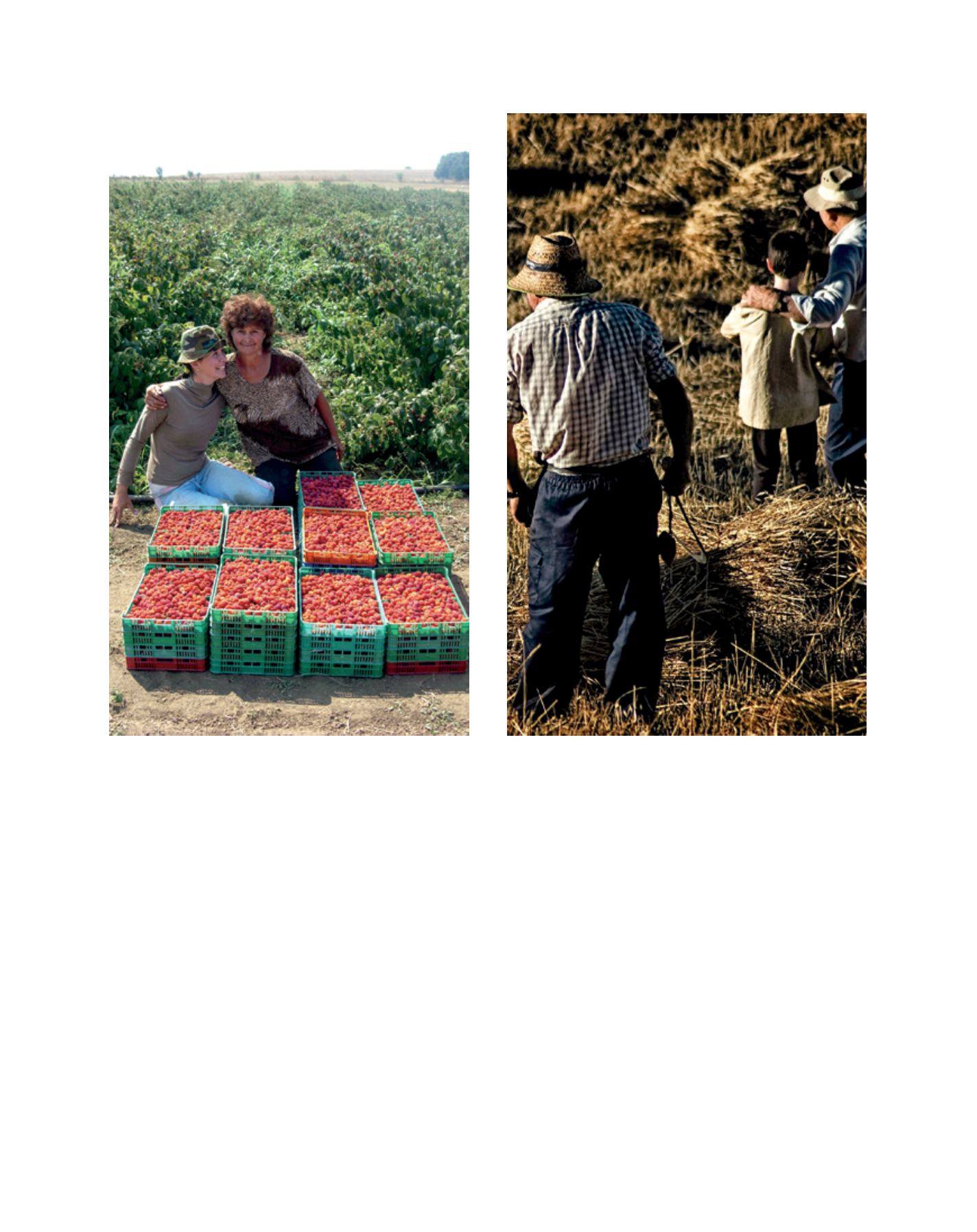

[
] 16
Image: Zornitsa Zdravkova
Image: Angel Benito Zapata
Fruit harvesting in the family garden, Bulgaria
Family farming in Spain
strategic importance, both now and in the future of the two
continents. But it is under threat. While its presence, role
and dynamics were once self-evident, we can no longer be
certain that family farming will be with us in the decades
to come. There is a widespread feeling that the disappear-
ance of family farming would be an immense loss. Thus,
new responses are needed that address both the external
and the internal threats.
There is growing awareness of the need to construct, at the
level of single or cooperating countries, new sovereign forms
of food and nutritional security. This will be a far from easy
task and it will surely take many years (although sudden and
unexpected crises might speed up the process). However, it
is equally certain that family farms are to be at the basis of
this new food model – simply because they are and remain
the most productive, most sustainable, most resilient and
most socially appropriate land-labour institutions.
The transitional processes that we need will require
extending our definition of the family farm. What will
remain constant in the definition is that the family retains
control over the farm’s main resources (notably, but not
only, the land) and provides all or most of the required
labour. However, the definition also needs to include an
upper limit to farm size coupled with an exclusion of spec-
ulative (or predatory) use of agricultural land. This is also
echoed in the proposal of the European Commission that
‘active farmers’ should be the sole beneficiaries of agricul-
tural and rural subsidies, while the possibility to use up
to 30 per cent of the budgets for ‘redistributive payments’
clearly points to the willingness to support smaller farms
(instead of favouring especially the megafarms). To
rephrase these proposals in positive terms: the operation of
the family farm needs to be aligned with the major societal
demands, needs and requirements of Europe and Central
Asia. New policies are definitely needed to institutionalize
such a realignment.
The problems and challenges of the twenty-first century
cannot be faced and resolved using theories and policies
that date to the previous century. A drastic and far-reaching
redesign of the policies that affect rural areas is needed.
R
egional
P
erspectives
















